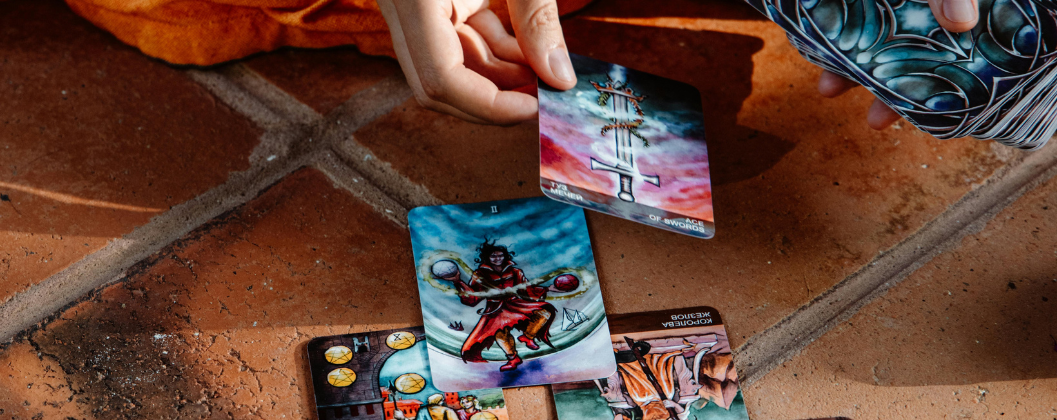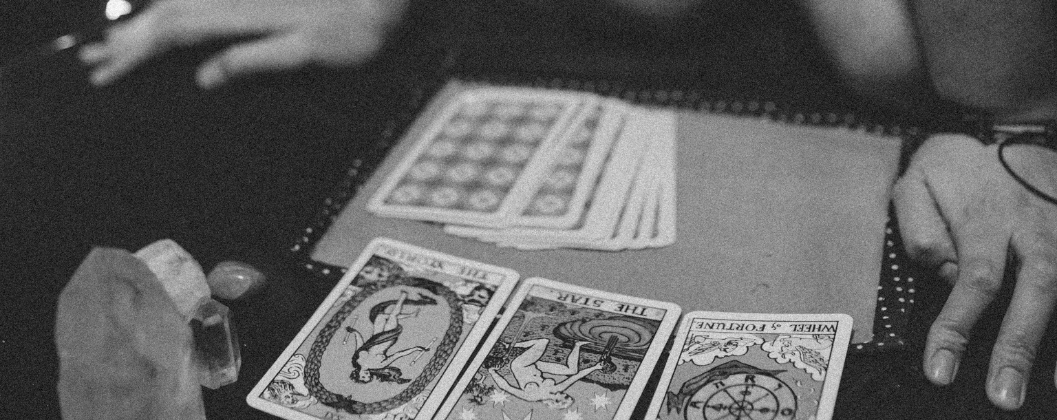10 Essential Tarot Tips For Every Reader
Refine your tarot practice with these essential tips, designed to help beginners build confidence and experienced readers deepen their practice.
Tarot reading is a beautiful and valuable art, offering guidance, spiritual growth, and deep self-reflection to those who seek its wisdom. However, both beginners and seasoned readers can face challenges—whether it’s building confidence, trusting intuition, or interpreting tricky spreads. This article offers strategies to help you work through those challenges and enhance your tarot practice.
1. Choose the Right Deck
Your tarot journey begins with choosing a deck that resonates with you. This is your first intuitive step as a reader, so it’s important to approach it with thought and care. The amount of resonation you feel with your deck is the amount of comfort and intrigue you feel when looking at the imagery. The more enhanced this feeling is when you are interacting with your deck, the easier reading the cards will be for you.
The right deck will also play a key role in interpreting tricky spreads.
When you feel energetically connected to the symbolism within your deck, you’re less likely to second-guess yourself. The right deck provides reassurance, and encourages you to confidently explore complex or challenging spreads without hesitation. Additionally, a deck that resonates with you can reveal subtle details within its imagery that might otherwise be overlooked, offering deeper insights that help you navigate difficult readings with more clarity.
2. Cleanse & Charge Your Deck
Cleansing your deck is an essential practice for enhancing your tarot skill, as it clears away any lingering or external energy in your deck that could influence your readings. When you cleanse, you’re not only refreshing the cards, but you’re also helping to clear your own mind, ensuring your interpretations come from a place of clear channels with Spirit rather than your own subconscious bias. Cleansing can be done in a number of ways, like passing your deck through incense or sage, or running it over with a selenite wand.
After cleansing, charging your deck is the next important step, as it fills the cards with focused energy and intention, making your readings more aligned and meaningful.
When you charge your deck with energy, your readings will reflect the vibration you’ve imbued into it, making each reading’s message loud and clear, and your interpretations incredibly impactful. Techniques for charging include leaving your deck under the full moon, surrounding it with crystals like clear quartz or amethyst, or meditating while holding the deck close to your heart space.
3. Create a Sacred Space
Creating a sacred space, such as an altar or meditation corner, transforms your tarot practice from a casual card-pulling session into a meaningful spiritual ritual. By dedicating a specific place for your readings, filled with objects that hold personal significance—like crystals, candles, or meaningful symbols—you create an environment that grounds and centers you before you even draw a card.
This intentional design not only lowers distractions but also helps you tune in more deeply to your intuition, strengthening your connection with the messages the cards reveal.
Consistently practicing in the same sacred space builds a familiar energy, making each return feel comforting and empowering. Over time, this energetic consistency amplifies your spiritual channels, and your practice becomes richer and more rewarding. Whether you keep your space simple or decorate it with symbolic items, the key is creating a setting that invites you to settle in, focus, and grow your spiritual connection with every session.
4. Master Shuffling and Drawing Cards
Mastering the techniques of shuffling and drawing tarot cards is more than just a mechanical step—it’s an essential part of building trust in your intuition and skill.
As you practice, the physical act of shuffling becomes a ritual in itself, a meditative moment where your energy connects with the deck.
With time, this process will feel more and more natural, allowing you to sense when the cards are ready to be drawn. This growing familiarity with your deck creates a sense of confidence, as you learn to trust not only the cards but also your ability to draw the ones most aligned with the guidance you seek. The mastery of the shuffle makes every card that you pull feel deeply significant and divinely guided, exactly the feeling that we’re searching for as we enhance our intuitive skill.
5. Ask Clear, Open-Ended Questions
Asking open-ended questions during a tarot reading invites deeper, more meaningful insights by allowing the cards to provide guidance beyond simple "yes" or "no" answers. Instead of seeking rigid outcomes, you create space for exploration, where the messages can reveal layers of context, emotions, and possibilities. This approach encourages you to see connections and interpret the cards in a way that feels intuitive and personalized, rather than purely instructional.
With open-ended questions, you’re not just asking what will happen, but why or how events may unfold, which naturally strengthens your storytelling ability as a reader.
By working with questions like “What can I learn from this experience?” or “How can I best approach this situation?” you give yourself the chance to interpret symbols and patterns with flexibility. Over time, this practice hones your confidence in drawing out nuanced meanings and trusting your own inner wisdom during readings.
6. Balance Guidebook Meanings with Intuition
Balancing guidebook meanings with intuition is key to creating tarot readings that feel both grounded and flexible, especially when you’re just starting out. While the guidebook can provide traditional interpretations to guide your understanding, your intuition adapts those meanings more specifically to each situation, and uncovers insights that go beyond the written explanations.
As you practice, this balance becomes easier, teaching you when to lean on the guidebook for clarity and when to trust your inner voice.
Instead of viewing the guidebook as a rigid instruction manual, you begin to see it as a companion to your intuition. Over time, this harmony strengthens your confidence, showing you that a meaningful reading comes from blending earthly knowledge with the wisdom you already hold within.
7. Build a Daily Tarot Practice
Building a daily tarot practice allows you to cultivate consistency, gradually strengthening both your intuition and card interpretation skills. Through regular practice, you become more familiar with the deck’s symbols, patterns, and meanings, making your readings feel more natural and fluid.
Over time, this daily ritual creates a sense of trust—not only in the cards but also in your ability to interpret them with confidence.
Instead of seeing a daily practice as a rigid commitment, think of it as a flexible ritual that adapts to your needs. Even brief sessions, such as pulling a single card each morning, can help you stay connected to the deck without feeling overwhelmed. The more consistently you show up, the more intuitive your readings become, making tarot a grounding part of your daily life.
8. Experiment with Spreads
Experimenting with tarot spreads is an excellent way to expand your skills and unlock new layers of meaning in your readings. While traditional spreads like the three-card or Celtic Cross provide structure, creating or trying new layouts allows you to explore questions from different angles.
This experimentation also encourages creativity and intuition, as you learn to interpret card placements beyond fixed layouts.
For example, you might design a spread to focus on a specific theme like relationships or career, or you can intuitively place cards and let their positions reveal their own meaning. Over time, this playful approach helps you become more adaptable, giving you the confidence to step outside of traditional methods and trust your instincts when interpreting complex or unfamiliar readings.
9. Incorporate Tools and Rituals
Incorporating tools and rituals into your tarot readings can enhance the experience by creating a deeper sense of focus and intention. Elements like crystals, candles, incense, or cleansing sprays can help you set the mood, clear the space, and ground your energy before beginning.
Rituals such as lighting a candle, shuffling the deck a certain way, or saying an affirmation can signal to your mind and spirit that it’s time to tune in, making your readings feel more sacred and meaningful.
These additions also provide a sense of structure, giving you consistent practices to rely on when preparing for a session. Over time, the ritual elements become familiar, calming, and help you slip into an intuitive flow more easily. By combining these tools with your readings, you create a supportive environment that not only enhances your connection to the cards but also strengthens your trust in the insights they provide.
10. Trust Yourself and Enjoy the Journey
While it’s natural to feel uncertain when you first begin your tarot journey, remember that every reading—whether clear or confusing—is a step toward greater understanding. Rather than striving for perfection, approach each session as an opportunity to learn, explore, and connect with your intuition. Trust that even the readings that challenge you are part of your growth.
By embracing the process, you free yourself from the pressure of getting everything “right” and instead focus on the joy of discovery.
With time, you’ll find that your confidence grows as you interpret the cards in ways that feel authentic and meaningful.
Interested in a professional reading to kick off your tarot journey? Book a session with me today and see what awaits you in the mystical realm!










